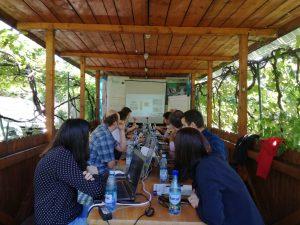- ASTESJ (Advances in Science, Technology and Engineering Systems Journal)
The paper “A Study of Humidity Influence on Data Accuracy for IoT Measurements of PMs Concentration” is published in ASTESJ, Volume 2, Edition 2, pag 180-187, 2020 – Mihaela Balanescu, George Suciu, Marius-Alexandru Dobrea, Cristina Balaceanu, Radu-Ioan Ciobanu, Ciprian Dobre, Andrei-Cristian Birdici, Andreea Badicu, Iulia Oprea, Adrian Pasat. https://astesj.com/v05/i02/p23/.
- Conferința internațională GREDIT 2020
The paper “Optimization of an Air Quality Monitoring System Through an Efficient Data Processing Algorithm” was accepted in GREDIT 2020 – Mihaela Balanescu, George Suciu, Marius Alexandru Dobrea, Adrian Pasat, Andrei Birdici, Cristina Mihaela Balaceanu, Ciprian Dobre. Conferința a fost amanata si va avea loc in toamna.
The paper “Assessment of Particulate Matter Concentration in Underground Transport Work Environment” was published in journal – George Suciu, Mihaela Balanescu, Andrei Birdici, Oana Orza, Adrian Pasat, Marius Alexandru Dobrea, Cristina Mihaela Balaceanu. DOI: 10.24193/AWC2020_04.
The paper “PMs concentration forecasting using ARIMA algorithm” was accepted in Vehicular Technology Conference: VTC2020-Spring – Andreea Badicu, George Suciu, Mihaela Balanescu, Marius Dobrea, Andrei Birdici, Oana Orza, Adrian Pasat.
Disseminating at ATOM-N 2018
Last preparations for ATOM-N 2018
presenting WINS@HI paper at SGEM 2018
Beia is present at UMF “Carol Davila” 2018 Congress


